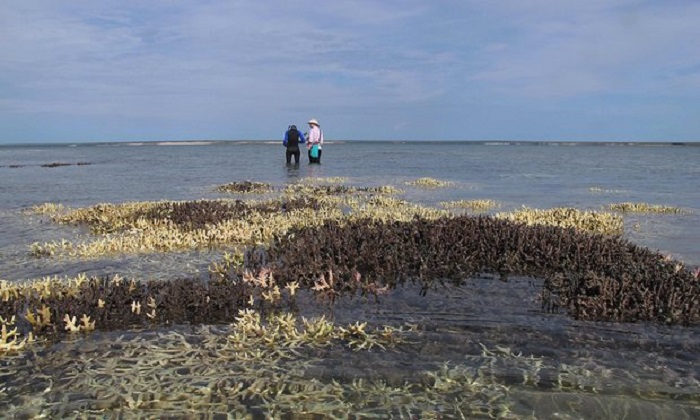`Zombie corals` pose new threat to world`s reefs

The new evidence of harm to corals comes as the most widespread coral bleaching event in recorded history is sweeping the world’s oceans. Water temperatures have been driven up by a run of record-breaking hot years, caused by climate change and the El Niño phenomenon. Very warm water causes corals to lose the algae that normally live inside them and help them feed.
Corals in every major reef region have already experienced severe bleaching. About 93% of the reefs on Australia’s Great Barrier Reef have been affected, and almost a quarter of the reef is now dead. Corals are hotspots of biodiversity and crucial nurseries for fish, upon which 1 billion people rely for nourishment.
The new research, presented at the International Coral Reef Symposium in Hawaii, sampled 327 coral colonies across the Caribbean to assess the reproductive ability of apparently healthy elkhorn coral, which is a threatened species.
In some places, including two sites in the Florida Keys, the coral had no eggs or sperm and therefore zero ability to reproduce. The scientists said this indicates these elkhorn corals are are essentially walking dead and will eventually die out, dubbing them “zombie corals”.
“It’s pretty discouraging,” said John Fauth, at the University of Central Florida and one of the team. “This is not good news.”
However, two samples from the more remote St Croix area found the coral had 100% reproduction ability. “Basically the places with the heaviest tourism had the most severe damage,” Fauth said.
Another study Fauth was part of found that oxybenzone, a common UV-filtering compound in sunscreen, is common in Hawaii, Florida and the US Virgin Islands.
The chemical kills coral but also causes DNA damage in adult coral and deforms the larval stage, making normal development unlikely. An earlier study showed that the highest concentrations of oxybenzone were found on the reefs most popular with tourists.
The new work found that concentrations of oxybenzone peak at the high tide. “We think aerosol sunscreen is to blame,” said Fauth. When someone sprays sunscreen on, much of it falls on the beach, he said, so the high tide comes collects the lost spray and washes it back out to sea.
The research also showed the toxic effects to coral, sea urchin embryos, shrimp larvae, and fish larvae exposed to preservatives, UV absorbers and microbeads from personal care products.
“We have to act now,” Fauth said. “It is simple things like not using chemicals that harm our coral. Wear rash guards or go without sunscreen during dives. And it is making a serious commitment to conservation and management of our reefs. We want to do everything we can to ensure that the underwater beauty we see today is around for generations to come.”















































